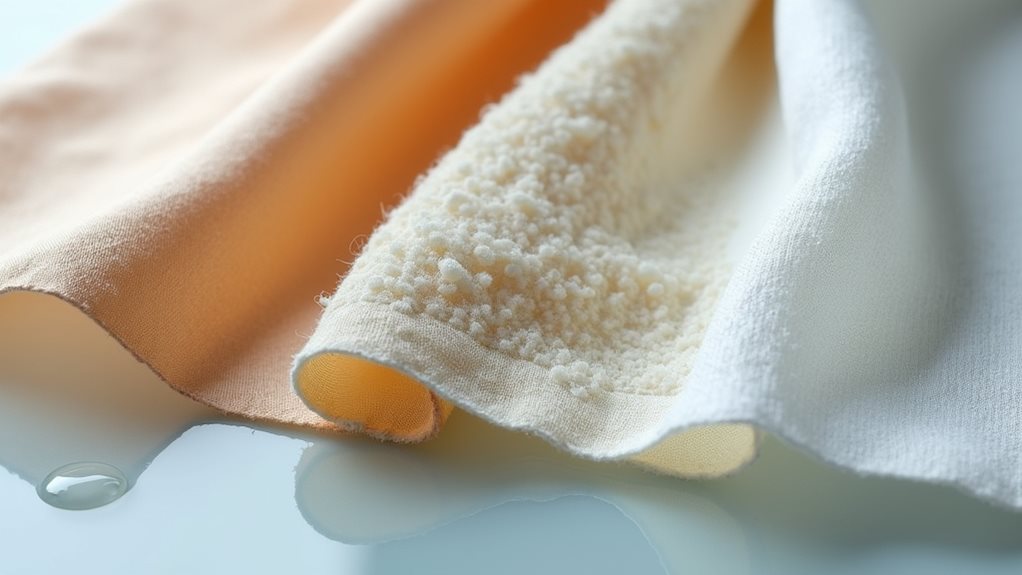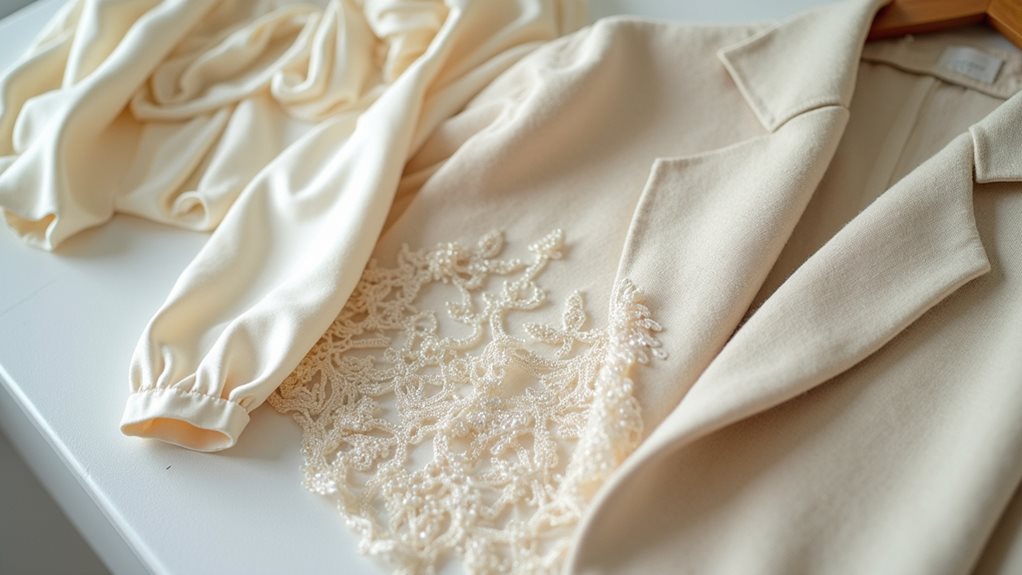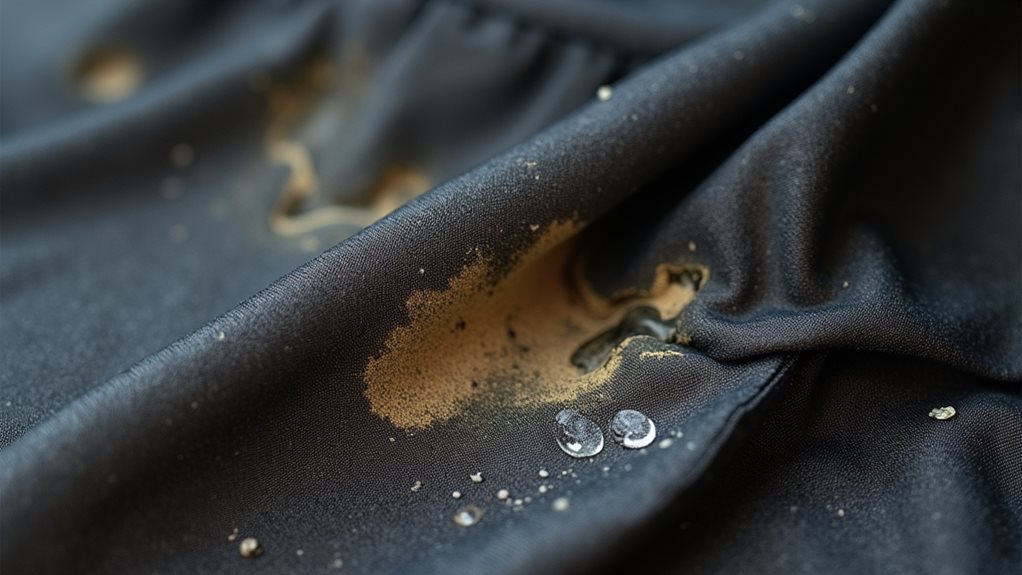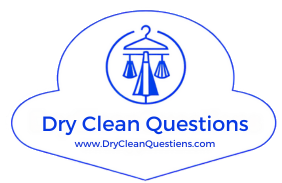Dry cleaning transforms your clothes by using specialized chemical solvents instead of water, effectively dissolving oil-based stains that regular washing can’t tackle. You’ll find it preserves delicate fabrics like silk and wool, preventing shrinkage, color bleeding, and structural damage while maintaining their original texture and shape. The process also sanitizes garments through heat treatment, eliminating bacteria and allergens that might be lurking in your favorite pieces. However, there’s more to understand about potential risks and environmental considerations.
How Dry Cleaning Removes Stains and Dirt Without Water
While most of us instinctively reach for water when we spill something on our clothes, dry cleaning takes a completely different approach that honestly blew my mind when I first learned about it.
Instead of water, dry cleaning uses specialized solvents like perchloroethylene to dissolve and remove stains from your garments. What’s fascinating is how these solvents excel at tackling oil-based stains that water simply can’t handle, which explains why your favorite silk blouse comes back looking pristine!
The cleaning process combines these powerful solvents with mechanical action, gently tumbling your delicate fabrics to lift away deep-set dirt. The rinse cycle recovers nearly all solvent for reuse, guaranteeing environmental safety while protecting fabrics that water would damage.
After the solvent cleaning, garments go through a drying and pressing phase to restore their original appearance and structured garment shape.
Effects of Chemical Solvents on Different Fabric Types

When you’re standing in front of your closet wondering which clothes need professional care, understanding how chemical solvents interact with different fabrics can save you from costly mistakes and preserve your favorite pieces for years to come.
Your silk blouses and wool sweaters will thank you for choosing dry cleaning since these natural fibers can shrink, lose their shape, or develop water spots when exposed to traditional washing methods.
On the other hand, synthetic materials like polyester might survive the chemical bath but could emerge smelling funky or still sporting that stubborn coffee stain.
The truth is, delicate materials require a gentler touch than your trusty washing machine can provide, and knowing which fabrics benefit most from solvent-based cleaning will help you make smarter decisions about garment care.
Professional dry cleaners use specialized equipment and chemical solvents like perchloroethylene to thoroughly clean garments while maintaining their texture, color, and structural integrity.
Solvent Impact on Natural Fibers
As someone who’s learned the hard way after watching my favorite cotton shirt emerge from the dry cleaner looking like it belonged to a smaller sibling, I can tell you that understanding how chemical solvent treatment interacts with natural fibers isn’t just helpful—it’s essential for preserving your wardrobe investments.
The solvent impact varies dramatically depending on your fabric type:
- Wool and silk benefit immensely from perchloroethylene, which dissolves oil-based stains without causing the shrinkage water would.
- Cotton and linen can suffer from color fading and weakened fabric structure if improperly handled.
- Delicate fabrics like cashmere maintain their texture better than with traditional washing methods.
- Always check garment care labels first – some natural fibers simply aren’t compatible with dry cleaning.
While perchloroethylene remains the most widely used solvent due to its excellent cleaning properties, many dry cleaners are transitioning to hydrocarbon-based alternatives that offer similar fabric protection with reduced environmental impact.
Synthetic Fabric Chemical Reactions
Since synthetic fabrics make up roughly 60% of our modern wardrobes, learning how they react to dry cleaning chemicals has become just as crucial as understanding natural fiber care.
You’ll discover that synthetic fibers like polyester and nylon generally handle dry cleaning solvents well, though they’re not invincible to texture alterations or color bleeding when exposed to perchloroethylene.
I’ve learned the hard way that acetate can literally melt under certain chemical reactions – talk about an expensive mistake! 😅
Your best bet? Choose hydrocarbon-based solvents for gentler cleaning methods that preserve garment longevity.
Always check care labels first, because understanding your synthetic fabrics’ tolerance levels will save you from watching your favorite pieces transform into unrecognizable disasters.
Delicate Material Preservation Methods
While synthetic fabrics have their own quirks with chemical solvents, delicate fabrics like silk, wool, and cashmere require an entirely different level of protective care that dry cleaning delivers beautifully.
When you’ve invested in quality pieces, you’ll appreciate how perchloroethylene and other non-polar solvents work their magic without the harsh effects of water.
Here’s how dry cleaning preserves your most treasured garments:
- Prevents shrinking and stretching – Water causes fibers to swell, but solvents maintain original dimensions
- Eliminates oil-based stains without penetrating delicate fibers deeply
- Stops color bleeding that destroys rayon and other water-sensitive materials
- Uses gentle tumbling action instead of aggressive washing machine agitation
This process maintains fabric integrity while removing stubborn stains that would otherwise ruin your investment pieces. Beyond stain removal, the professional pressing techniques used in dry cleaning create a crisp, polished finish that’s nearly impossible to replicate with home care methods.
Benefits of Dry Cleaning for Delicate and Specialty Garments

When you’re holding that gorgeous silk blouse you splurged on last month, or that perfectly fitted wool blazer that makes you feel like you could conquer the boardroom, the last thing you want is to watch them get ruined by a well-intentioned trip through your washing machine.
That’s where dry cleaning becomes your delicate fabrics‘ best friend, using non-water-based solvents that tackle stubborn oil-based stains without wreaking havoc on specialty garments.
Unlike regular washing, this process preserves the shape and structure of your investment pieces while maintaining their original texture and appearance.
Plus, dry cleaning sanitizes garments through heat treatment, eliminating bacteria and allergens without causing color bleeding or fading that would make you cry into your coffee ☕.
This specialized method is particularly crucial for formal wear and structured garments with interfacing that would lose their professional appearance and proper fit if exposed to water-based cleaning methods.
Potential Risks and Limitations of the Dry Cleaning Process

Dry cleaning isn’t always the magical solution we’d like it to be, and I learned this the hard way when my favorite cashmere sweater came back from the cleaners looking slightly faded and feeling oddly stiff after several visits.
Here’s what you should know about dry cleaning‘s potential downsides:
Even the most trusted dry cleaner can leave your cherished garments damaged, faded, or oddly textured after repeated visits.
- Fabric degradation occurs when harsh solvents like perchloroethylene weaken fibers over time, causing discoloration and texture changes.
- Water-sensitive fabrics can still suffer damage if handled improperly, despite being “dry clean only.”
- Stain removal limitations mean water-based stains often require additional treatments beyond standard dry cleaning.
- Environmental concerns and health risks from solvent exposure have prompted regulatory scrutiny of traditional methods.
- Chemical residues on freshly cleaned garments can pose health risks, as perchloroethylene has been classified as a probable human carcinogen by the EPA and linked to neurological problems and liver damage.
Understanding these limitations helps you make better decisions about your garment care!
Preservation of Garment Shape, Color, and Texture

After years of watching my carefully curated wardrobe survive countless cleaning cycles, I’ve come to appreciate how dry cleaning acts like a gentle guardian for your most precious garments, preserving their original beauty in ways that traditional washing simply can’t match.
The preservation magic happens because those specialized solvents tackle oil-based stains without drowning delicate fabrics in water, which means your silk blouses won’t lose their lustrous texture and your wool suits maintain their structured garment shape.
You’ll notice colors staying vibrant instead of fading into sad, washed-out versions of themselves, while shrinking becomes a worry of the past.
Those finishing touches—the careful steaming and pressing—transform wrinkled disappointments back into crisp perfection. 😊
This specialized cleaning method proves particularly valuable for maintaining expensive clothing investments, ensuring that quality pieces like cashmere sweaters and tailored jackets continue to look their best for years to come.
Environmental and Health Impact of Dry Cleaning Chemicals

While I’ve spent years celebrating the gentle magic of dry cleaning, I’d be doing you a disservice if I didn’t pull back the curtain on the less glamious reality lurking behind those pristine garments.
The truth is, traditional dry cleaning chemicals like perchloroethylene carry considerable health risks and environmental consequences that we can’t ignore:
- Health concerns – Workers face occupational exposure to carcinogens, leading to respiratory issues and neurological effects.
- Environmental contamination – These chemicals persist in soil and create groundwater pollution.
- Regulatory response – The EPA has phased out perc in residential facilities since the 1990s.
- Hope ahead – Eco-friendly solvents and safer alternatives like liquid CO2 are emerging.
Your clothes deserve care that doesn’t compromise our planet’s wellbeing. For consumers, PERC residues can remain on freshly dry cleaned garments, particularly when clothes are not properly aired out before wearing.




